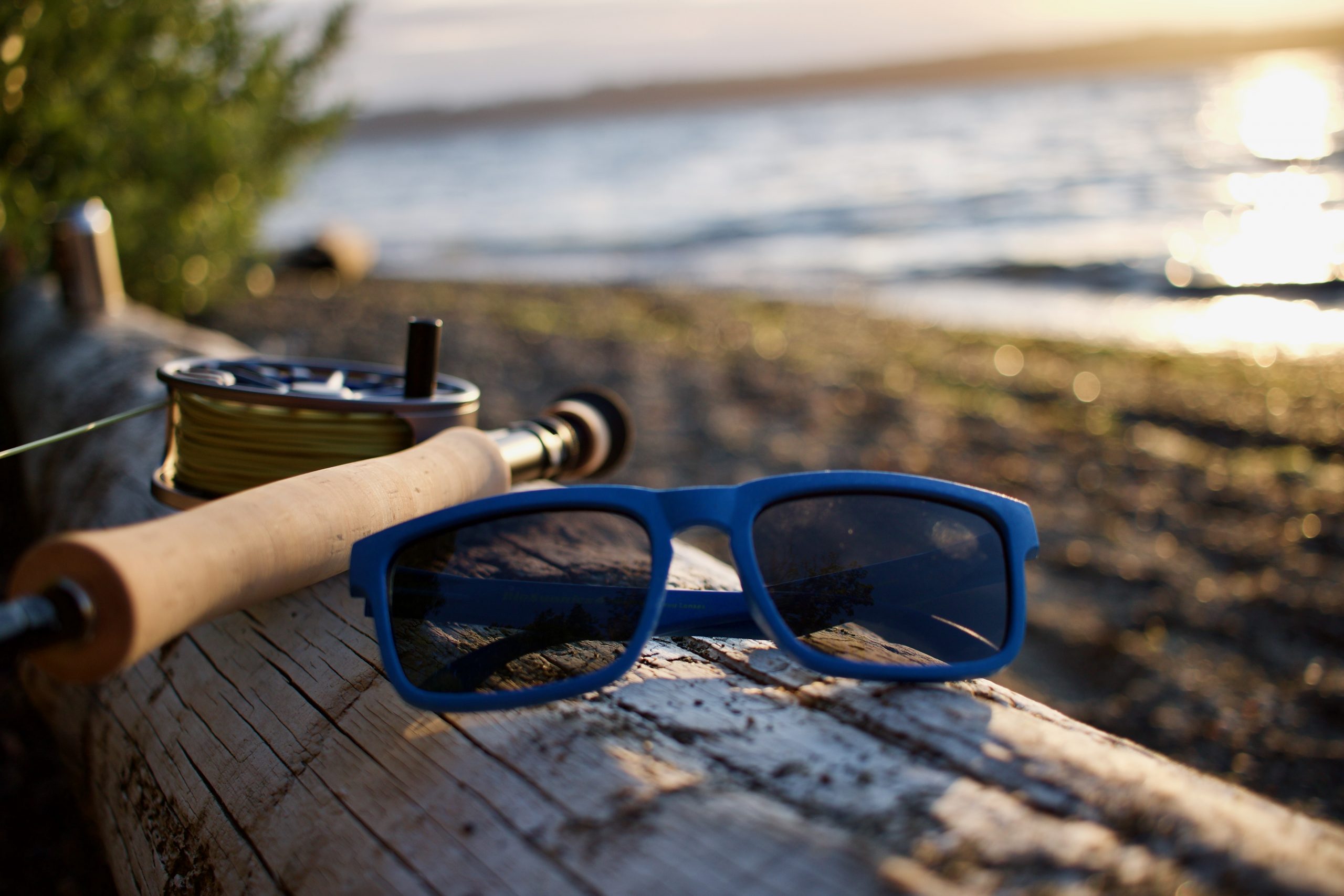SUBSCRIBE FOR NEW STORIES AND REVIEWS
We have some amazing stories that we’re excited to share with you. We’ll never share your contact information outside of Wild Human. You can expect roughly a few emails per month.
Sunglasses are a statement for some, but for me, they’re functional first, followed by fit and style. I treat sunglasses like my clothing pile – I don’t have different glasses for fishing, driving, and dinners with friends. Right now my go-to glasses are the Smith Transfer. For the past three weeks, I’ve replaced my Smiths with BioSunnies’ Freedoms to put them through their paces.
BioSunnies are affordable polarized sunglasses with frames made primarily from wheat straw. Affordable, in this case, really does mean affordable – $25 for adult sunglasses and $19.99 for the kid’s version. Good for the wallet? Check.
There are currently three available models to choose from: The Classic is positioned as a unisex option and the Freedoms have larger frames with harder edges. The kid’s BioSunnies are advertised as suitable for ages three to nine and resemble the Classics.
Using wheat straw, the part of wheat that’s left behind after a harvest, isn’t a new process. You can buy plates, cooking utensils, cups, and food containers, all manufactured using wheat straw.
The main question I needed to understand before reviewing BioSunnies is whether or not wheat straw is truly a better option for the planet. The answer to that question may seem simple or obvious to you but nearly every material comes with some kind of carbon cost.
Wheat straw on its own may be a more ecologically friendly option than plastics, but if there is a high cost to process and store the material, the benefits start to muddy.
Eco-friendly is a term that gets thrown around like confetti at a parade. Understanding the difference between what’s good for the planet and what’s good for marketing can be complicated. To help me navigate the nuance of what is and isn’t eco-friendly, I turned to Karl Englund, Associate Professor at Washington State University’s Composite Materials & Engineering Center.
Wheat straw is the stalk that’s leftover after wheat is harvested. There isn’t much practical use for it and it’s often thrown away, burned, or used as ground cover.
To make products, like BioSunnies, the straw is ground down to a powder, dried, then mixed with a heated binding agent and molded into the shape of various products. BioSunnies are 75% wheat straw and 25% polypropylene which is the plastic binding agent.
Yes, there is technically plastic in BioSunnies, but before you roll your eyes, consider that not all plastics are created equally. BioSunnies use recycled polypropylene which means that the life of that recycled product will hopefully be rolled into more products in the future, reducing the need to create brand new polypropylene.
Wheat straw seems great, right? So, why aren’t more companies jumping on the wheat wagon? The answer lies in the harvest.

So, back to the pitch for BioSunnies – do the glasses allow you to say no to plastic? Not entirely, but they’re close. Wheat straw is more of a way to reduce the amount of plastics required to make different products. If plastic is in the mix, using recycled polypropylene is about as good as we can hope for.

I wore my BioSunnies nearly every day for four weeks. That means in the car, fly fishing, and around town. So far, they’re holding up like new. About a month before I started reviewing the Freedom, I bought the kids version and turned them loose on my three-year-old. I’m happy to report that the kids’ BioSunnies are still with us.
BioSunnies are polarized, which is a must-have as they protect against both UVA and UVB rays. They also cut the glare on water which is ideal for fishing, kayaking, and driving.
It’s great to see polarized lenses that don’t require a small investment, but there are noticeable differences between my polarized Smith’s and BioSunnies. And really, at this price-point, there should be a difference.
The Smith Transfer, for example, currently retails for $169. The BioSunnies Freedoms come in at $25. Smith would have some serious questions to answer if a set of $25 sunglasses blow their glasses out of the water.

I found BioSunnies to be functional and they cut the glare on water and on the road. However, they’re not in the same league as Smiths or Costa sunglasses – and I don’t think they’re meant to be. Focus on realistic expectations for $25 sunglasses and I think you will be happy with BioSunnies.
The Classic is advertised as a unisex option and I found the frames to be a little too small for my big head. The Classic may be a good fit for you, but the larger Freedoms were better suited for my review.
The glasses are light and comfortable even after several hours of fishing. The kids’ version is suitable for ages three to nine. Not surprisingly, they’re a little big on my three-year-old, but only slightly.
The frames are more in line with a casual style rather than sport sunglasses which often have wrapped style frames. The difference between sports sunglasses and Biosunnies was obvious while fishing – the narrow arms on the frames let in a lot more light than sunglasses that have a full wrap around your head and eyes.
The finish on the glasses came with some rough edges and extra pieces attached to the frames that looked like extra bits from the mold. This wasn’t a huge deal but opening up brand new glasses to find a few rough edges isn’t exactly what I want to see in my new purchase.
cCurrently, there are only three models to choose from. All models are more of a casual style. A sports model with wrapped style arms may appeal to customers who’re looking for a more secure fit or to reduce light and glare while on the water.
Here we are again, back to the pitch for BioSunnies.
Say no to plastics, say yes to wheat straw: Check-minus. BioSunnies don’t exactly say a complete goodbye to plastics but they do a great job of reducing the use of harmful plastics by manufacturing with wheat straw as the primary ingredient and recycled polypropylene as the binding agent.
Good for the wallet?: Check. $25 for a good set of polarized glasses is tough to beat.
Good for the planet?: Check, but not just because they’re made from wheat straw. BioSunnies are helping buyers understand that there are options beyond 100% plastic materials that can produce quality products without breaking the bank.
BioSunnies offers functional, affordable, and accessible sunglasses that are made primarily with natural wheat straw, which is a better starting point than all plastic. If that opens the door for even a few people to start exploring environmentally responsible products that they can add to their daily life, BioSunnies is helping move the sustainability needle.
Wheat straw is a great step towards more sustainable and ecologically friendly products. The long-term viability of wheat straw in manufacturing is unclear, but it’s an easy shift that can open the doors for buyers to explore even more eco-friendly options beyond plastics.
The sunglasses work and they’re affordable. These are the types of products that are going to help move consumers to buy. If we want to see a change in consumer behavior, we also have to be honest about those behaviors. Asking someone to pay for an expensive product that makes big performance compromises, all in the name of sustainability is a tough sell. BioSunnies makes it easy to use our buying power for good. That’s worth Wild Human’s support.
We have some amazing stories that we’re excited to share with you. We’ll never share your contact information outside of Wild Human. You can expect roughly a few emails per month.